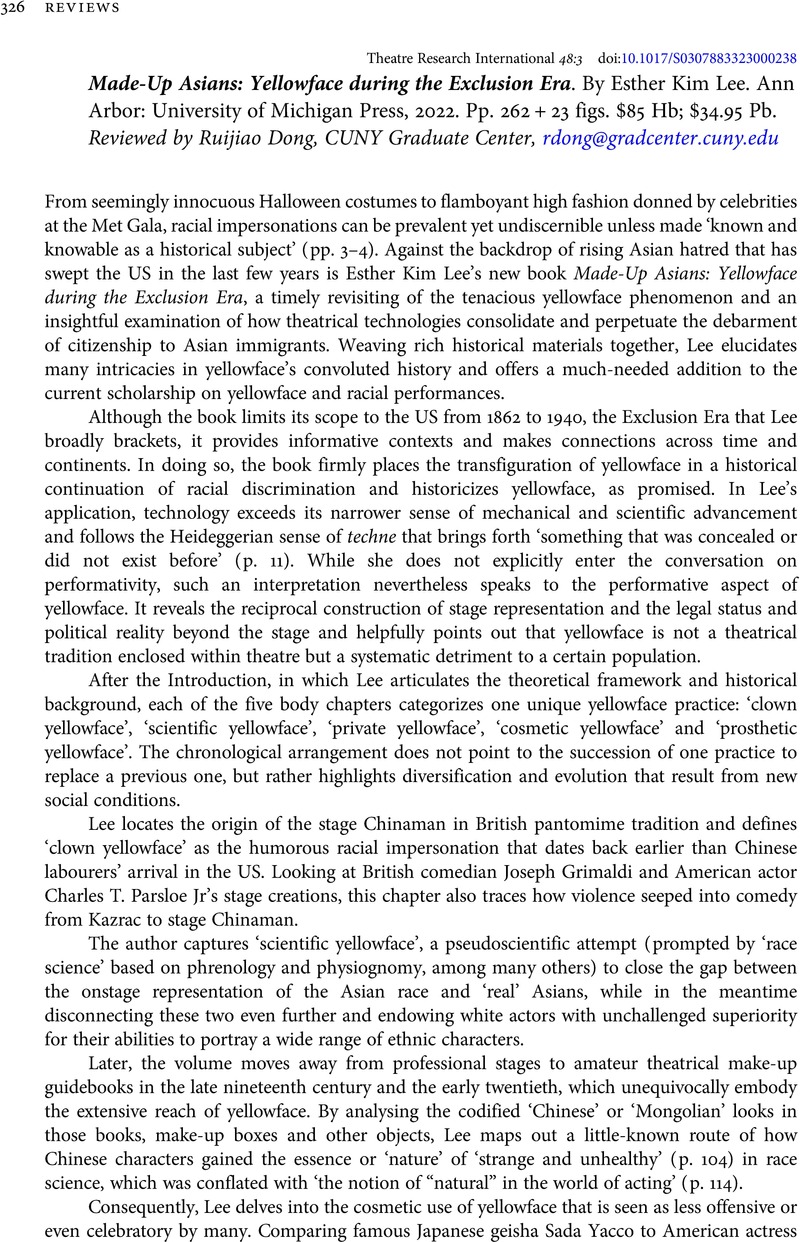No CrossRef data available.
Article contents
Made-Up Asians: Yellowface during the Exclusion Era. By Esther Kim Lee. Ann Arbor: University of Michigan Press, 2022. Pp. 262 + 23 figs. $85 Hb; $34.95 Pb.
Review products
Made-Up Asians: Yellowface during the Exclusion Era. By Esther Kim Lee. Ann Arbor: University of Michigan Press, 2022. Pp. 262 + 23 figs. $85 Hb; $34.95 Pb.
Published online by Cambridge University Press: 09 November 2023
Abstract
An abstract is not available for this content so a preview has been provided. Please use the Get access link above for information on how to access this content.

- Type
- Book Review
- Information
- Copyright
- Copyright © International Federation for Theatre Research 2023


